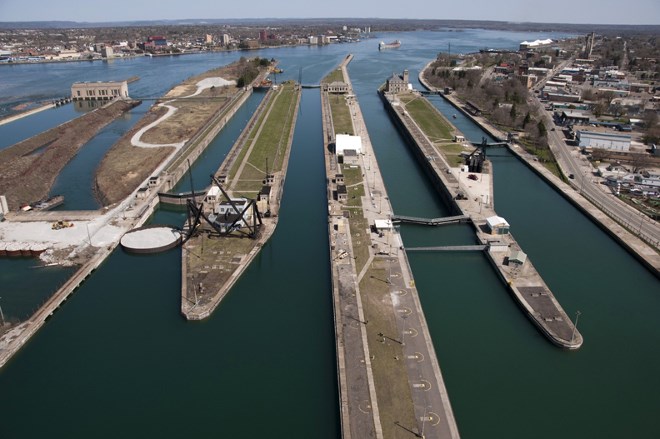Winter layup is over and the St. Lawrence Seaway locks are open to commercial navigation.
The St. Lawrence Seaway Management Corporation marked the opening of its 59th navigation season with the CSL St-Laurent being the first ship to transit the St. Lambert lock, near Montreal, on its way to Thunder Bay to pick up grain.
In a March 20 news release, Seaway corp. president Terence Bowles, noted that a strong carry-over of grain from the 2016 harvest should help the waterway record an increase in cargo levels this season.
He further remarked on the role that the 3,700-kilometre long Seaway plays in facilitating trade between Canada and the United States, and with more than 50 countries.
“Given the advances that we are making with our modernization program, I am confident that the St. Lawrence Seaway is ready for the future.
As a crucial linchpin connecting the heartland of North America to the world, we enable shippers to move goods safely and efficiently,” he said.
The Seaway system begins in Montreal and extends to the west with 15 locks, including two at Sault Ste. Marie, Mich.
The U.S. locks at the Soo are scheduled to open after midnight on March 25. It closed Jan. 15 for annual winter maintenance.
The Cleveland-based Lake Carriers’ Association used the season’s opening to press for government funding to support the construction of a new lock at the Soo.
The trade association said reliance on a single super lock, to handle the largest ships on the Great Lakes, “continues to threaten the U.S. economy.”
More than 90 per cent of the cargo on U.S.-flagged ships transit the Poe Lock at the Soo. Damage to it would have severe repercussions on the U.S. economy.
A 2016 U.S. Department of Homeland Security study forecasted that a six-month closure of the Poe would bring American steel production and heavy manufacturing to a standstill, leaving nearly 11 million Americans out of work.
A second super lock has been authorized at full federal expense, but the association said a “flawed” benefit/cost analysis by the U.S. Army Corps of Engineers has stalled construction.The corps is releasing a new report by year’s end.
A U.S. Department of Treasury report issued in January estimates a second Poe-sized lock could have a benefit/cost ratio as high as 4.0, or nearly three times higher than the 0.73 estimated by the Corps.
The association is also lobbying for a second heavy icebreaker to the U.S. Coast Guard fleet. During the winters of 2014 and 2015, heavy ice flows delayed or cancelled shipments, costing the U.S. economy more than $1 billion in economic activity, delayed sailings, and caused more than $6 million in damage to U.S. ships.




